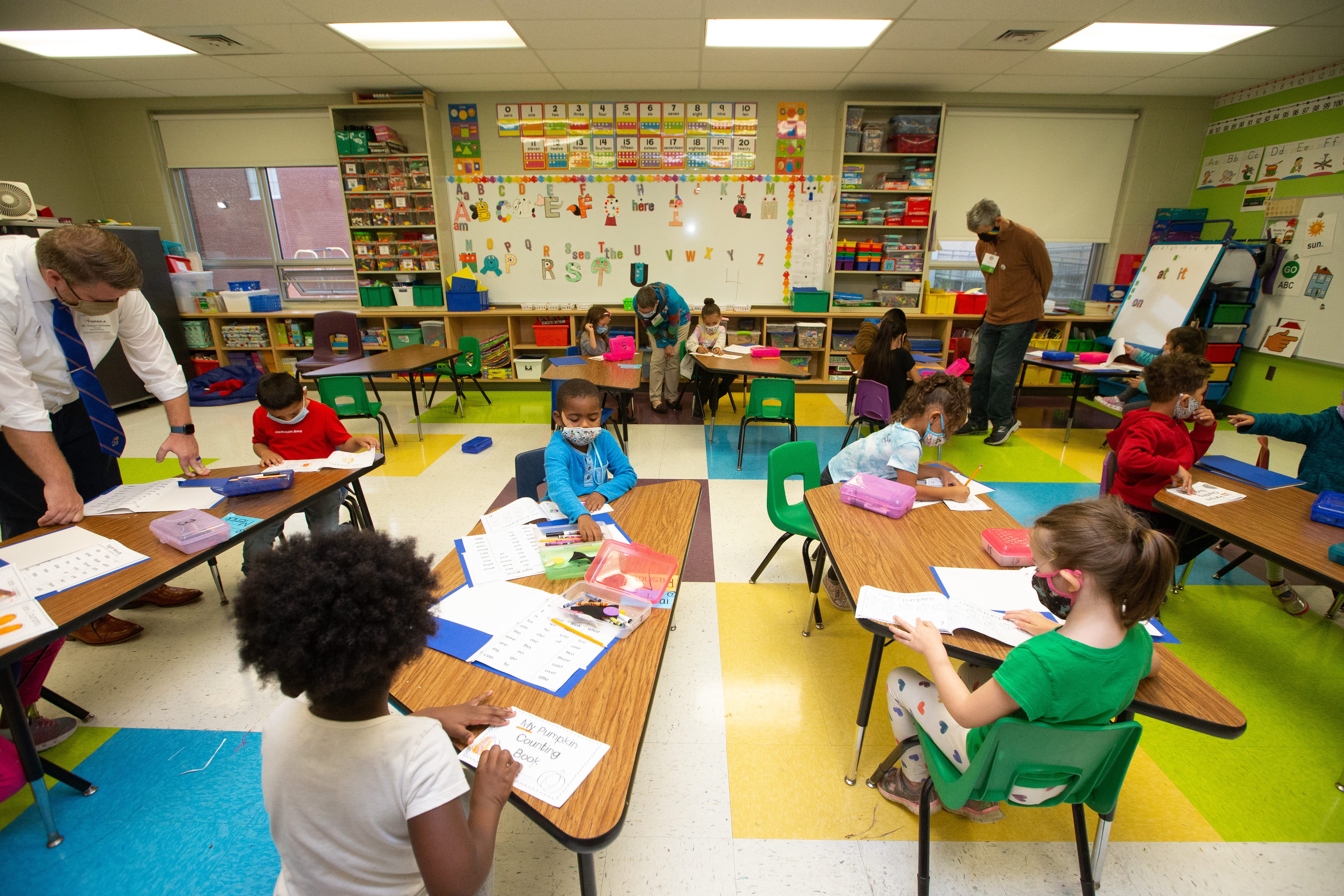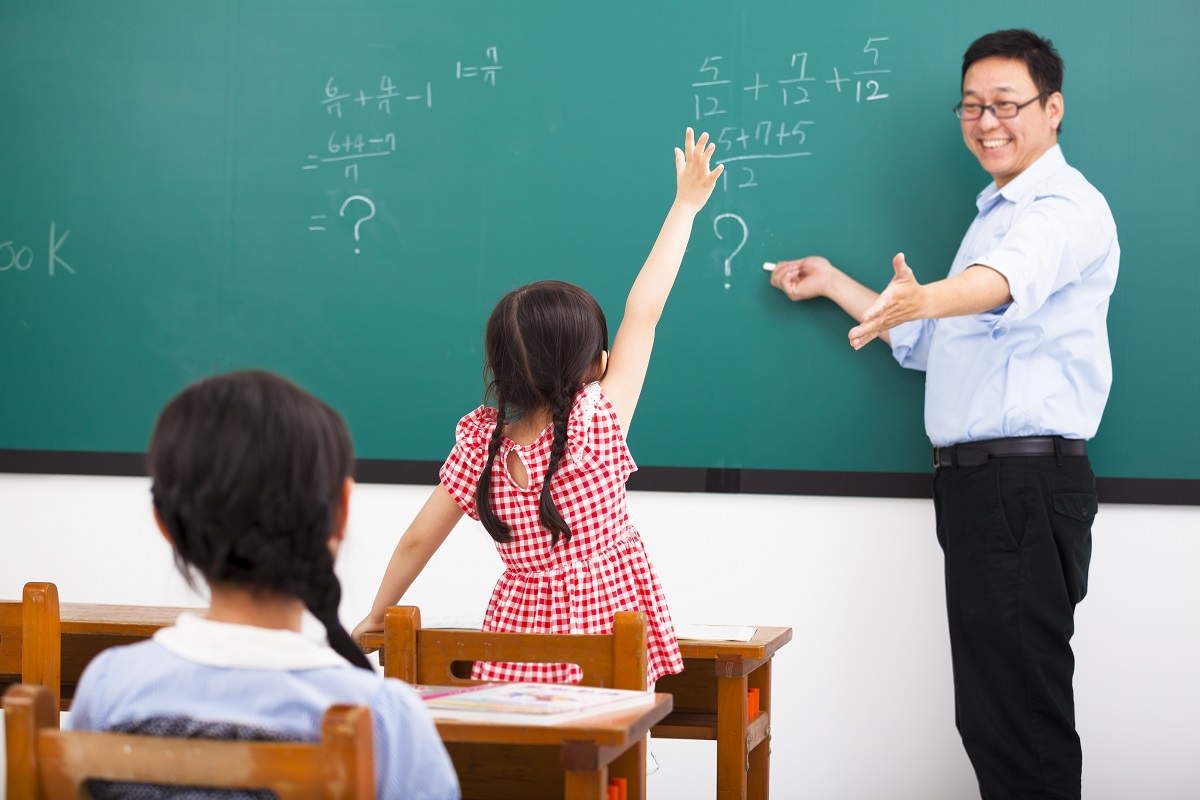A Comprehensive Overview to the Various Knowing Techniques in Main Science Instruction
The expedition of varied understanding techniques in primary scientific research instruction offers a possibility for instructors to enhance student involvement and understanding significantly. By taking a look at hands-on knowing methods, inquiry-based methods, and joint approaches, we can identify effective practices that satisfy various discovering designs. Additionally, the integration of innovation and separated instruction plays an essential duty in fostering a comprehensive environment. The inquiry stays: how can these techniques be efficiently implemented in the classroom to optimize their influence? The answer depends on a more detailed analysis of each method and its effects for mentor scientific research.

Hands-On Understanding Strategies
Hands-on learning techniques play a pivotal duty in primary science direction, involving pupils in energetic exploration and trial and error. These approaches permit learners to communicate straight with products and sensations, promoting a deeper understanding of scientific concepts. By utilizing manipulatives, designs, and real-life experiments, instructors develop an atmosphere where pupils can observe, assume, and test their ideas.
Such strategies not only improve understanding however also cultivate vital thinking and analytical abilities. When pupils take part in activities like constructing basic devices, planting seeds, or conducting chain reactions, they are encouraged to ask concerns and look for responses via their very own monitorings. This experiential method assists to debunk complex scientific principles, making them a lot more relatable and obtainable.
Additionally, hands-on knowing advertises collaboration among peers, as students often operate in teams to carry out experiments or share searchings for. This teamwork not only enhances their learning experience yet likewise establishes important social abilities. Inevitably, incorporating hands-on strategies in primary science direction cultivates a long-lasting love of discovering and inquisitiveness regarding the natural world, laying a solid foundation for future academic pursuits in scientific research and past.
Inquiry-Based Understanding
Inquiry-based understanding is an educational strategy that motivates pupils to ask inquiries, check out phenomena, and construct their very own understanding of scientific principles. This technique shifts the focus from typical teacher-led direction to a more student-centered experience, where learners take the effort in their academic trip. By promoting curiosity, inquiry-based understanding promotes deeper interaction with the material, enabling trainees to discover topics in a significant context.
In method, this technique usually involves hands-on experiments, observations, and vital reasoning tasks that straighten very closely with the scientific technique. Pupils are motivated to develop theories, style examinations, and analyze data, which grows vital skills such as analytical and problem-solving reasoning. The duty of the instructor in this framework is to assist in exploration, directing pupils via the query process while motivating independent thought and partnership.
Additionally, inquiry-based knowing nurtures a sense of possession over the learning procedure, encouraging pupils to pursue knowledge actively. This approach not just boosts understanding of clinical concepts yet also fosters a long-lasting love for learning, equipping pupils with the skills necessary to browse a significantly complex world.
Collaborative Discovering Approaches
Joint learning methods equip pupils to find out this here involve in significant communications with peers, fostering a shared duty for their instructional outcomes. In key scientific research instruction, these approaches encourage students to work with each other to explore scientific concepts, solve troubles, and perform experiments (primary science tuition Singapore). By taking part in team activities, students can utilize diverse viewpoints, enabling richer understanding and retention of clinical expertise
One key aspect of collaborative discovering is the focus on interaction abilities. Pupils must articulate their ideas, pay attention proactively to others, and discuss concepts, all of which are important expertises in both academic and real-world contexts. This social interaction not only boosts their understanding of scientific concepts but likewise promotes team effort and conflict resolution skills.
When students see the value of their contributions within a team, they are much more likely to take possession of their understanding trip. On the whole, integrating collaborative knowing find this approaches in primary scientific research guideline more info here cultivates a dynamic knowing atmosphere that prepares trainees for future scholastic and social challenges.
Technology Integration in Scientific Research
The assimilation of innovation in key science instruction boosts finding out experiences by giving innovative devices and sources that support different mentor methodologies, including joint knowing - primary science tuition Singapore. Using digital platforms, simulations, and interactive applications enables pupils to engage deeply with scientific principles, facilitating a much more hands-on method to knowing
Virtual laboratories, for circumstances, allow students to conduct experiments safely and efficiently, promoting inquiry-based learning. These devices can replicate real-world scientific circumstances, permitting pupils to visualize complex processes that would be difficult to replicate in a standard classroom setting. Furthermore, modern technology fosters communication and collaboration among trainees, as they can share findings and work with each other on projects via on-line platforms.
Furthermore, multimedia discussions and instructional video clips can enrich lessons by providing to diverse knowing styles, making abstract principles more obtainable. Information evaluation devices also empower students to collect and analyze clinical information, enhancing critical thinking skills. In general, the calculated consolidation of technology in primary scientific research guideline not just enhances involvement but also prepares trainees for a technically sophisticated culture, furnishing them with crucial skills for future scientific ventures.
Distinguished Instruction Approaches
Separated direction techniques are essential for dealing with the diverse needs of students in main scientific research education. These approaches allow teachers to tailor their teaching methods to accommodate varying capacities, passions, and finding out styles within the class. By using differentiated instruction, educators can create a comprehensive environment that fosters interaction and boosts understanding of scientific concepts.
One efficient technique is to make use of adaptable grouping, which enables students to work together with peers at similar skill levels or with varying viewpoints. This approach motivates peer knowing and advertises crucial reasoning. In addition, using options in jobs can encourage students, permitting them to choose tasks that resonate with their rate of interests while still fulfilling curricular objectives.
Furthermore, integrating tiered projects is another beneficial method. By developing tasks with differing levels of complexity, teachers can make certain that all pupils are suitably tested, regardless of their efficiency. Utilizing developmental analyses to determine understanding further enables teachers to readjust their educational techniques dynamically, making sure that each learner obtains the support they require.
Inevitably, carrying out differentiated direction approaches in primary scientific research education not just improves student understanding results but likewise grows an interest for scientific research, preparing students for future scholastic quests.

Final Thought
In recap, effective primary science guideline requires a multifaceted strategy that encompasses hands-on understanding, inquiry-based methods, and joint techniques. The combination of innovation and differentiated direction further provides to varied understanding designs, cultivating an environment favorable to expedition and crucial thinking.
The expedition of varied discovering approaches in main scientific research direction provides an opportunity for instructors to improve student engagement and comprehension dramatically.Hands-on knowing strategies play a critical role in primary science instruction, involving pupils in active exploration and trial and error.Inquiry-based knowing is an educational strategy that motivates students to ask concerns, investigate sensations, and build their own understanding of scientific concepts.Joint understanding strategies encourage students to involve in significant interactions with peers, promoting a common obligation for their academic results. Overall, incorporating collaborative learning techniques in primary science instruction grows a vibrant discovering atmosphere that prepares trainees for future scholastic and social challenges.
Comments on “Personalized Primary Science Tuition Singapore to Cater to Your Child’s Needs”